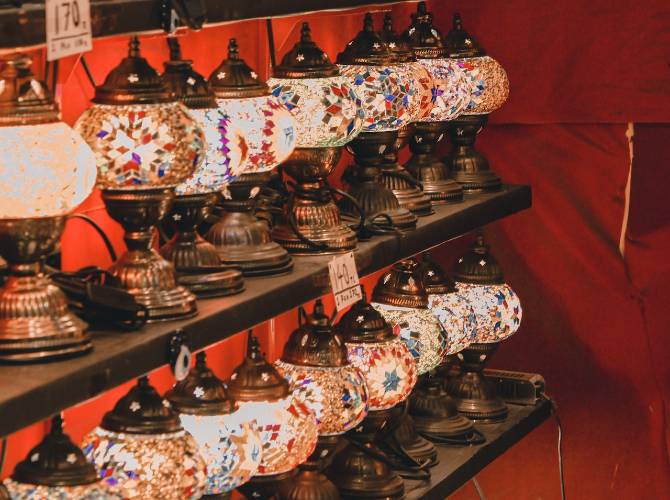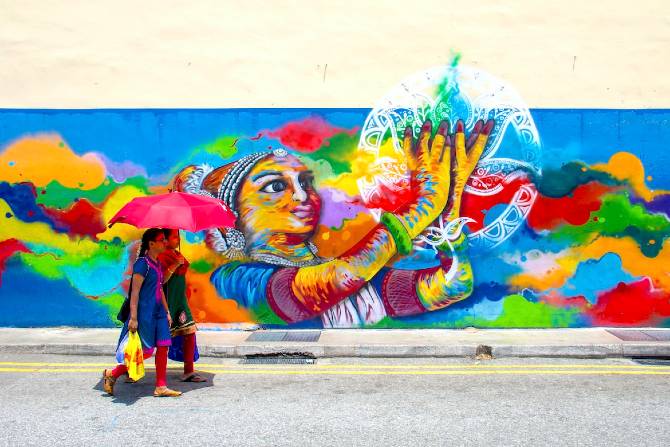Where to Find Istanbul’s Best Museums and Historic Sites
16 December 2022
Founded around 660 BC as Byzantium and then later renamed as Constantinople, Istanbul has been conquered and rebuilt numerous times throughout the centuries. And thanks to its location on both sides of the Bosphorus (the narrow strait separating Europe and Asia), the city straddles two continents – both physically and culturally. This city’s rich history and sheer diversity is reflected in its urban fabric, which is dotted with colourful mosques, museums and markets. Below, we round up the best historic sites to visit in Istanbul, whether you have one day or three.
Tip: Make your base at Fraser Place Anthill, Istanbul, which is a 35-minute drive from Sultanahmet Square (home to top sights such as the Blue Mosque and Hagia Sophia).
Historic Places to See in One Day
The Blue Mosque

Arguably Istanbul’s most photogenic building, the 17th-century Sultan Ahmed Mosque – more popularly known as the Blue Mosque – is famous for the 20,000-plus hand-painted iznik (ceramic) tiles that adorn its interior. A shining example of classical Ottoman architecture, the mosque is an iconic fixture of the city’s skyline and mirrors the domed silhouette of the Hagia Sophia standing across the square.
As the main entrance is reserved solely for worshippers, visitors must enter by the side entrance, which will take you past the courtyard – which is almost as large as the mosque itself. While free to visit, the Blue Mosque is still an active religious site so modest dress is required. Don’t worry if you’ve wandered in on a whim – the mosque loans head scarves and wraps to visitors.
Basilica Cistern
Constructed in 532 AD under the orders of emperor Justinian I, this historic site in Istanbul is the largest surviving Byzantine cistern. It was built from 336 marble columns – many salvaged from ruined Roman temples and monuments – and once supplied drinking water to the Great Palace of Constantinople. While the palace no longer exists, the cistern was renovated in the 1980s to welcome visitors. Walk along the raised wooden platforms and look out for the fish swimming in the water. You might even spot the mysterious Medusa heads (one positioned sideways and the other upside down) forming the bases of two columns.
Hagia Sophia

Built in the 6th century, Hagia Sophia was a Greek Orthodox church for nearly a thousand years. Also commissioned by emperor Justinian I, it was converted into a mosque in 1453 before being secularised as a museum in 1934. In 2020, the site was once again rehallowed as a mosque by Turkey’s current president, Recep Tayyip Erdogan.
Hagia Sophia is widely considered the magnum opus of Byzantine architecture, and for good reason. Inside, visitors will discover beautiful stained glass windows, glittering mosaics and Islamic calligraphic medallions suspended from the building’s main dome – all of which make for a truly awe-inspiring sight.
Historic Places to See in Two Days
Istanbul Archaeological Museums
Close to the Topkapi Palace, you’ll find the Istanbul Archaeological Museums, made up of the Archaeology Museum, the Museum of the Ancient Orient and the Museum of Islamic Art. Showcasing archaeological and artistic treasures from the Topkapi collections, the three museums collectively house over one million artefacts that detail the history of Istanbul and Islam. Highlights here include the sarcophagus of Alexander the Great, which depicts scenes from the ruler’s life in vivid 3D; the blue-tiled Karaman Mihrab, a semi-circular prayer niche indicating the direction of Mecca; the beautifully restored Tiled Pavilion, one of the city’s oldest Ottoman structures; and the Treaty of Kadesh from 1269 BC, the world’s earliest surviving peace treaty.
Grand Bazaar

Situated in the historic Fatih district, the 500-year-old Grand Bazaar is one of the largest covered markets in the world, with some 400,000 visitors daily. There are 61 maze-like streets lined with shops and stalls selling handcrafted Turkish ceramics, carpets, teas, lamps, leather goods, jewellery and more. It’s still very much a traditional market, so come prepared with cash – and don’t shy away from practising your bargaining skills. Historic places in Istanbul to see in three days or more An extra day allows you to explore other parts of Istanbul away from the bustling Sultanahmet district.
Historic Places to See in Three Days
Suleymaniye Mosque
An extra day allows you to explore other parts of Istanbul away from the bustling Sultanahmet district. Said to be just as impressive as the Blue Mosque but without the long queues, the iconic Suleymaniye Mosque crowns one of Istanbul’s seven hills and overlooks the Golden Horn waterway. Built in the 16th century for Suleyman the Magnificent, the domed structure is the city’s largest Ottoman-era mosque and features luxurious finishes such as mother-of-pearl window shutters, painted corbels, traditional ceramic tiles and stained-glass windows. Do note that modest dress is required; visitors may loan coverings from the mosque.
Dolmabahce Palace

The luxurious Dolmabahce Palace was built in 1856 by Sultan Abdulmejid I, who decided to move his imperial court from Topkapi Palace to a lavish new dwelling on the shores of the Bosphorus. It was subsequently used by the last six Ottoman sultans as their primary residence and administrative seat. No effort was spared designing Turkey’s largest palace, which is lavishly decorated with gold and crystal. Don’t miss the famous Crystal Staircase, built in the shape of a double horseshoe. The largest crystal chandelier in the world, weighing a massive four tonnes, also hangs in this very palace – a gift from England’s Queen Victoria. Fun fact: All clocks in the palace are turned to 9.05am, the time of death of former leader Mustafa Kemal Ataturk, who adopted the palace as his presidential home.
Galata Tower
Standing at a height of 67m, Galata Tower is one of the best places in Istanbul for panoramic views. It was likely first built in the 6th century to spot fires; thereafter, it was repurposed as a jail and then turned into a visitor attraction in the 1960s. Galata Tower also played a key role in what was supposedly the world’s first ever intercontinental flight. In 1638, Hezarfen Ahmed Celebi donned a pair of artificial wings and leapt from the top of the tower, successfully crossing the Bosphorus and landing in the Asian side of Istanbul.
Kadikoy Market
A 15-minute ferry ride across the Bosphorus will take you to the Asian (and largely residential) side of Istanbul. One of the area’s top attractions is the historic Kadikoy Produce Market, where you’ll find fresh fruits, vegetables, spices, fish, cheese and more. Open every Tuesday and Friday since 1969, it’s a local favourite thanks to its reasonable prices, and is undoubtedly one of the must-visit markets in the world for foodies.
The market has moved locations several times, but is currently back at its original site in Hasanpasa. From Kadikoy ferry station, take a 20-minute metro ride to Unalan station. Thereafter, it’s a 10 to 15-minute walk to the market.

Not a Fraser World Member? Sign up today for free membership and enter a world of privileges
- Complimentary Stays
- Up to 20% off Best Flexible Rate
- Room Upgrade
- Early Check-in
- Exclusive Rewards
- Welcome Voucher


























